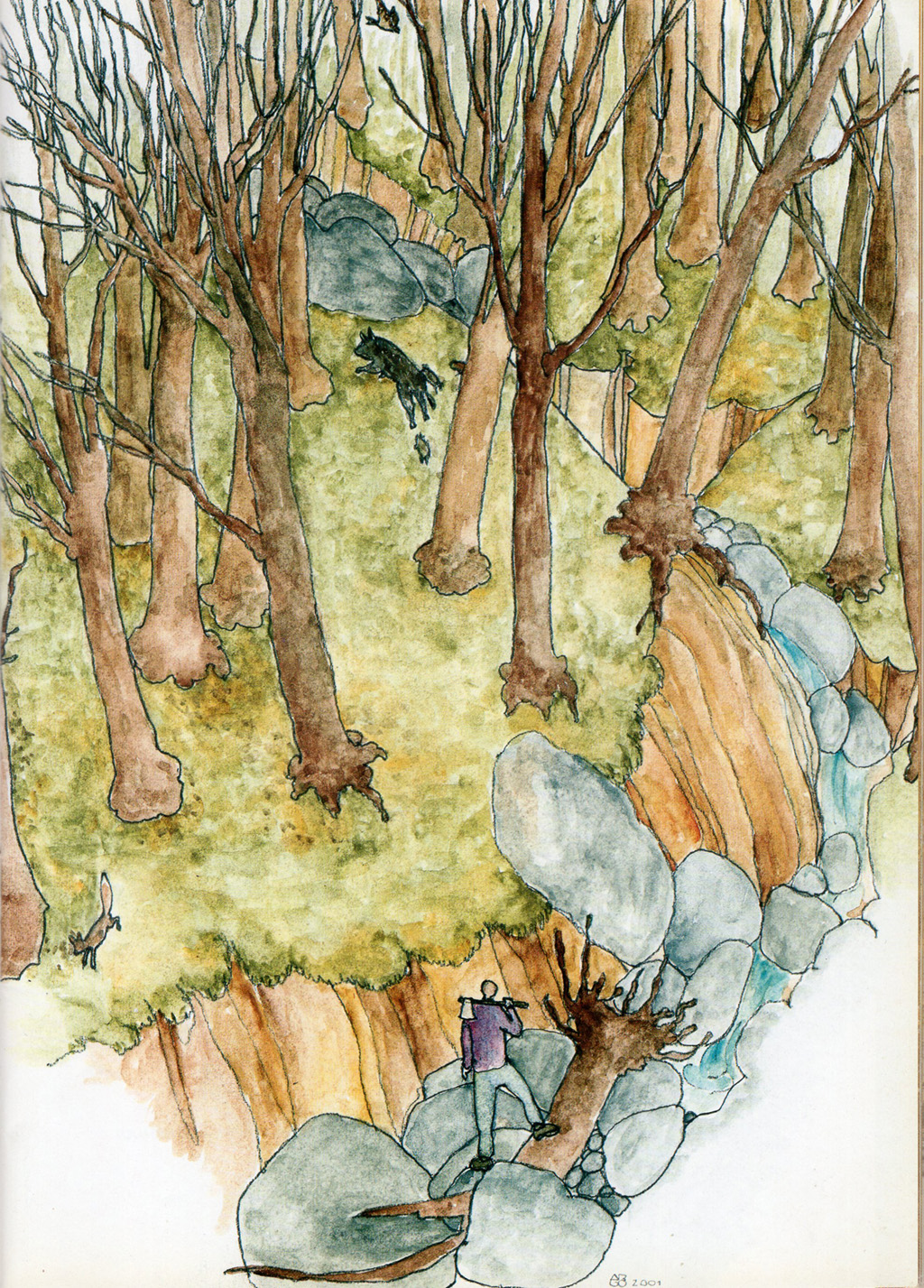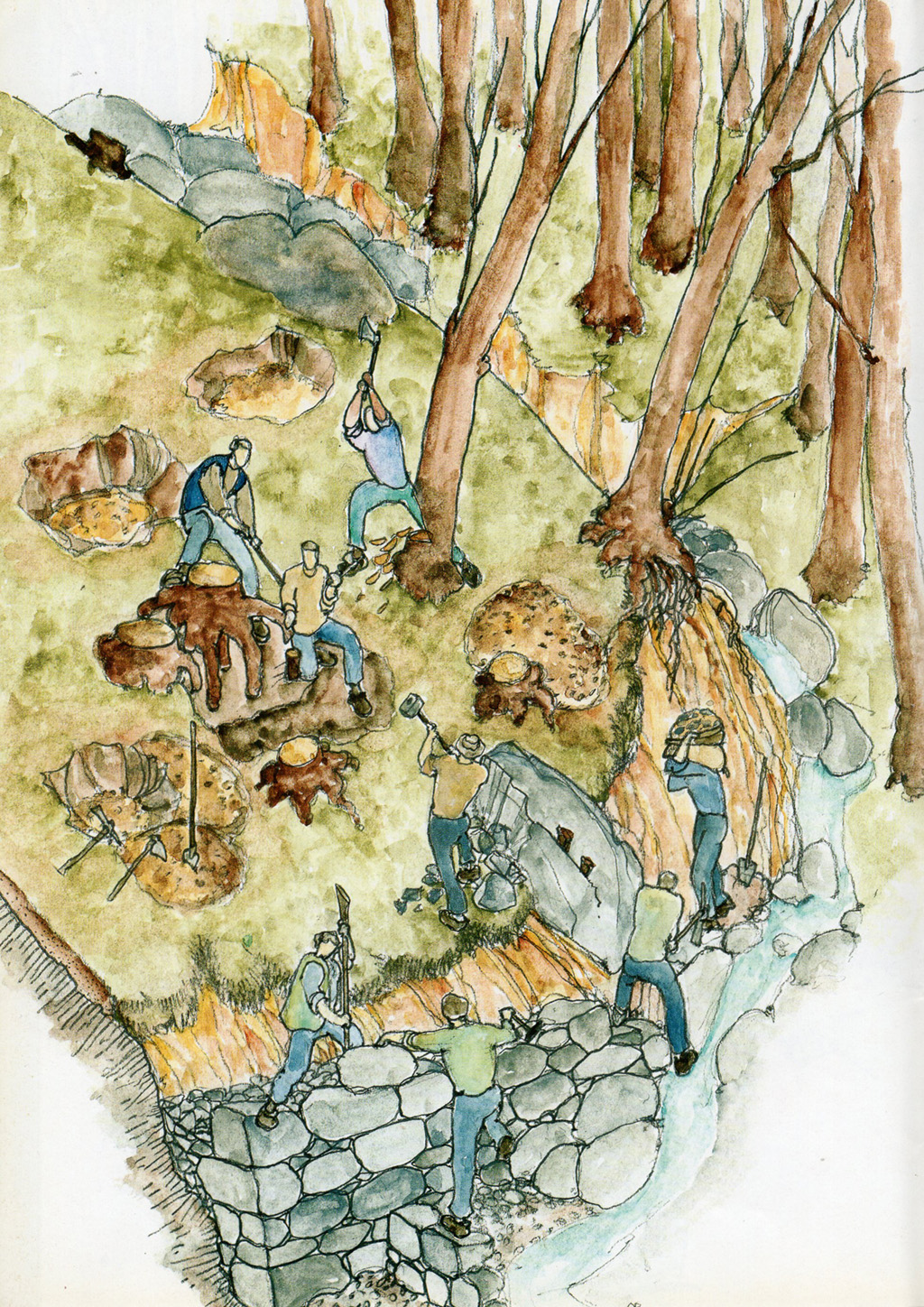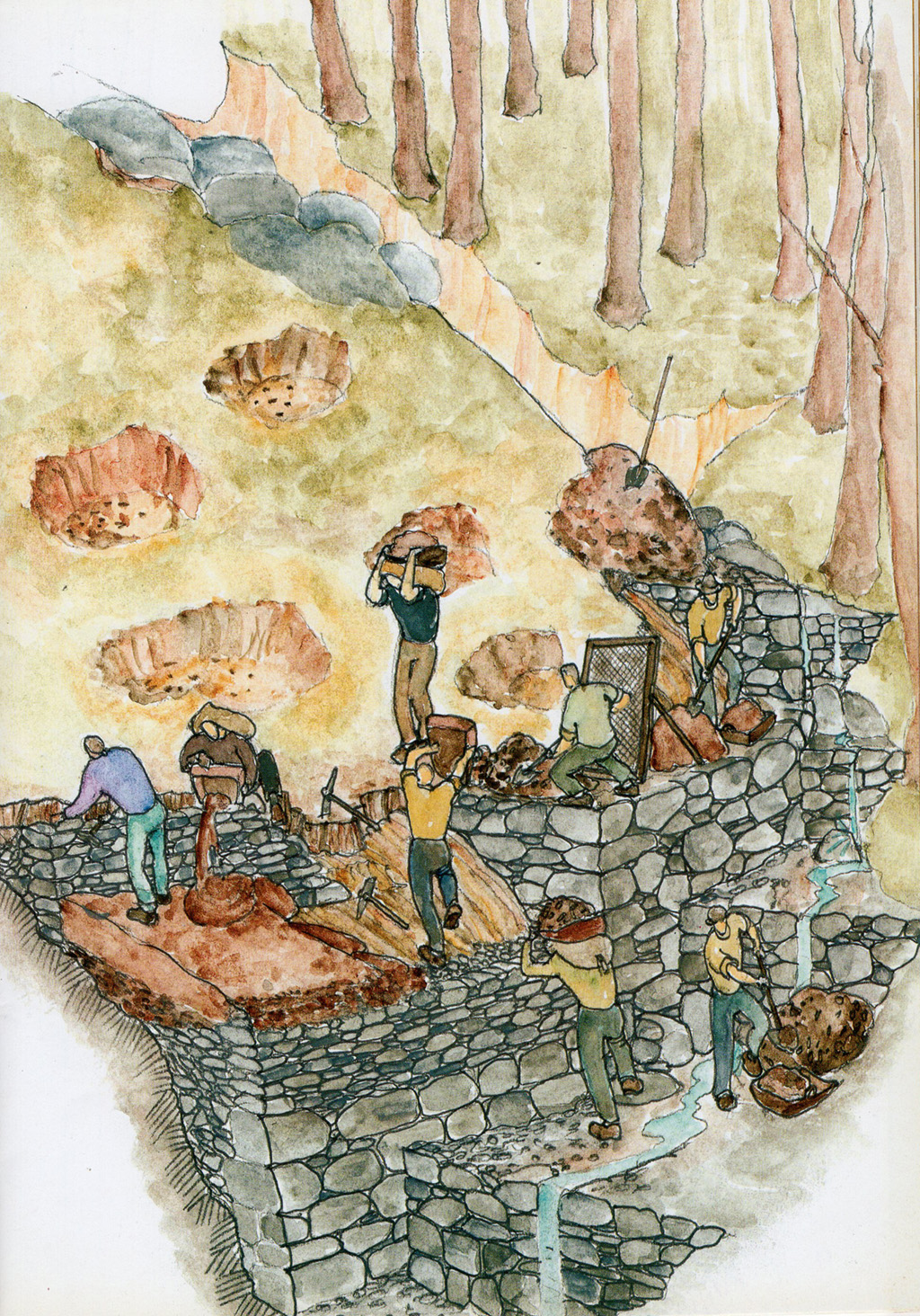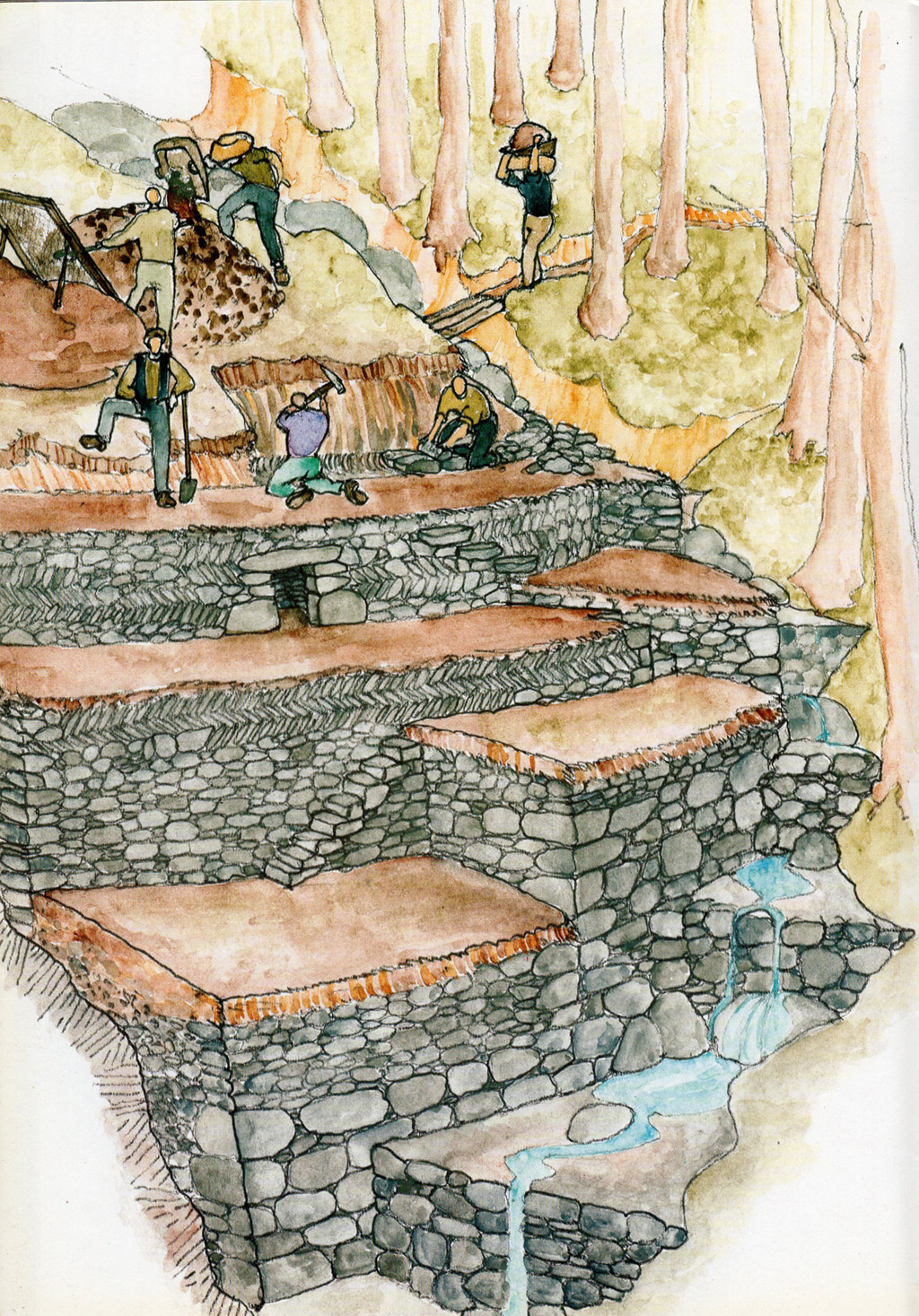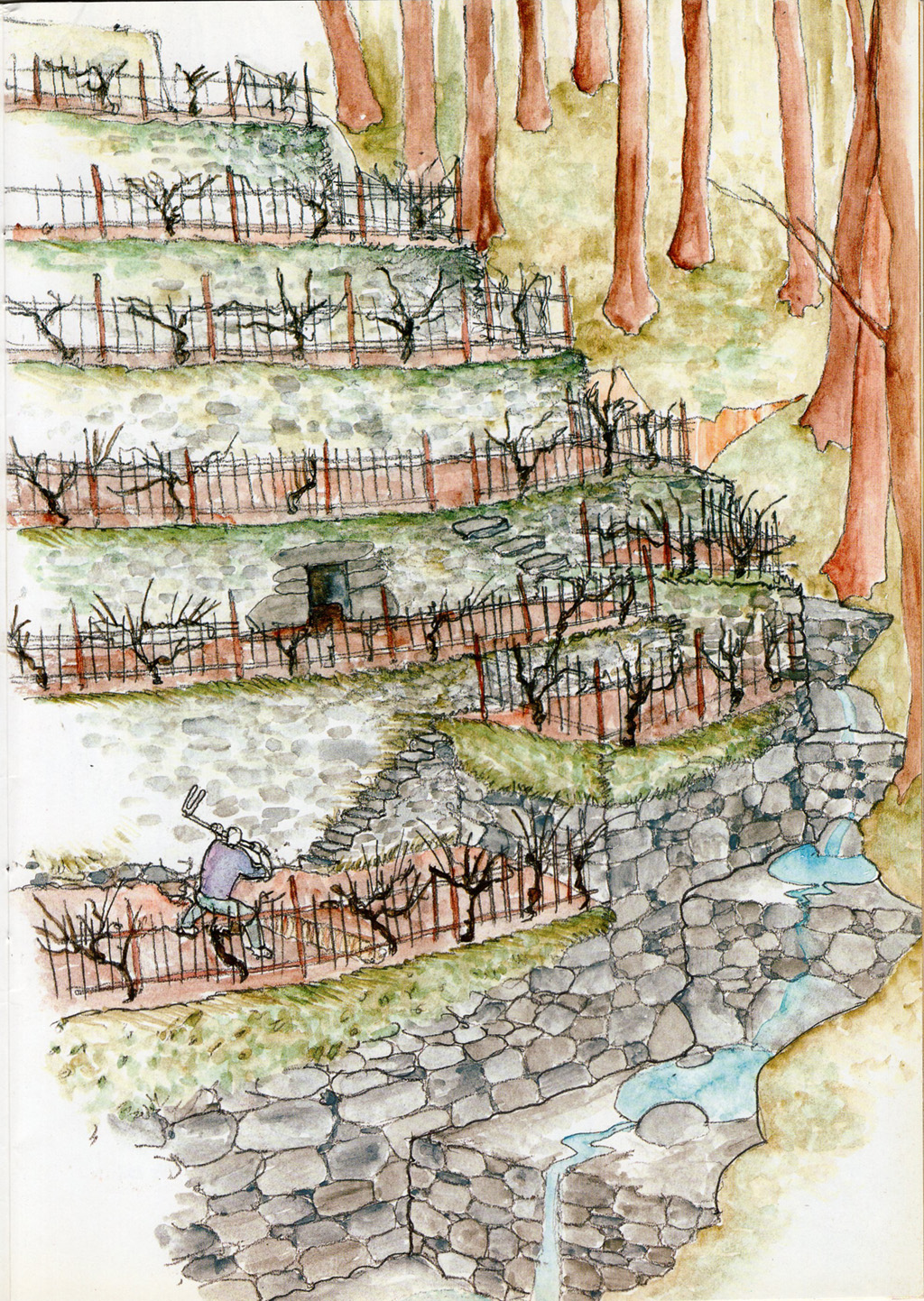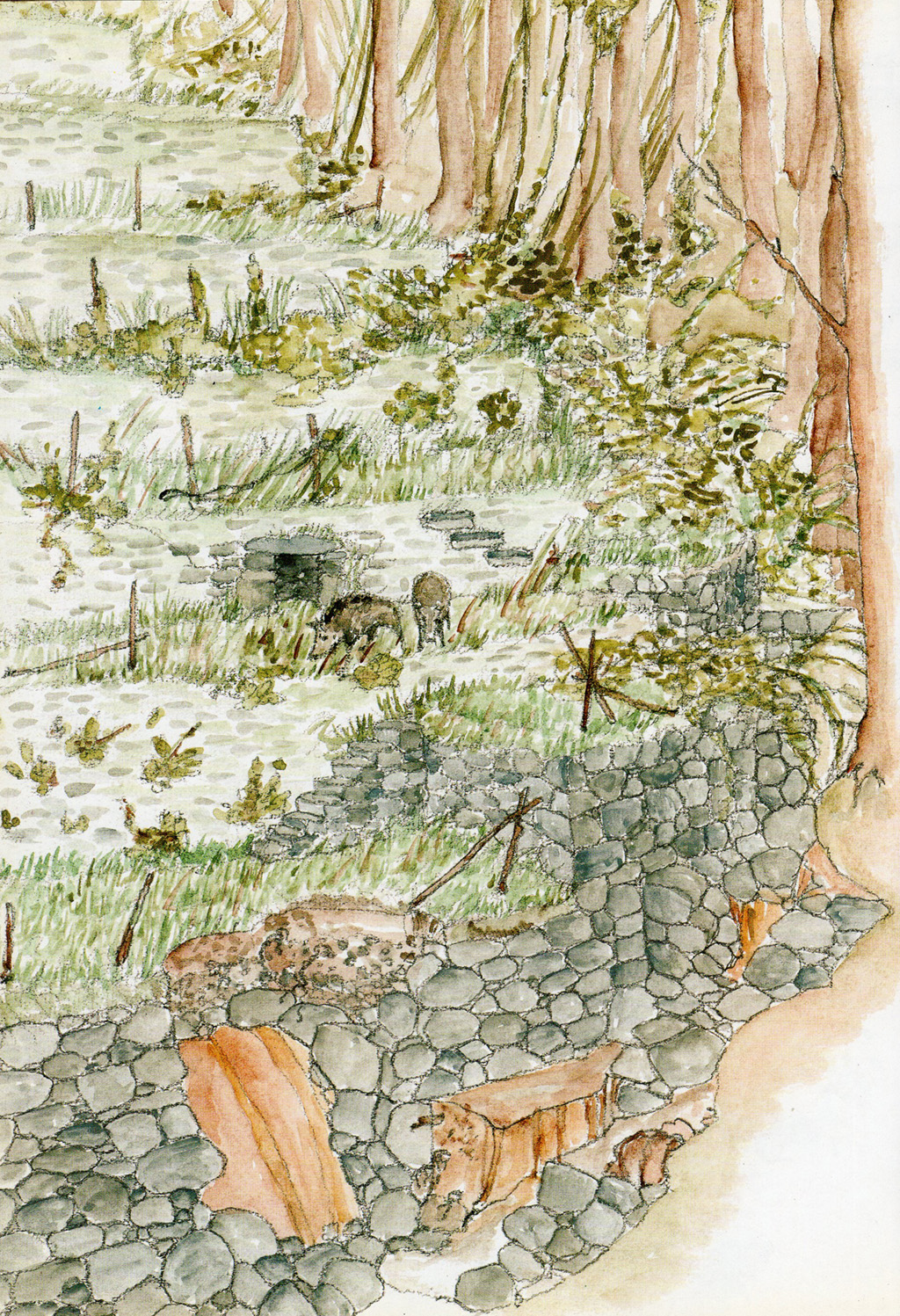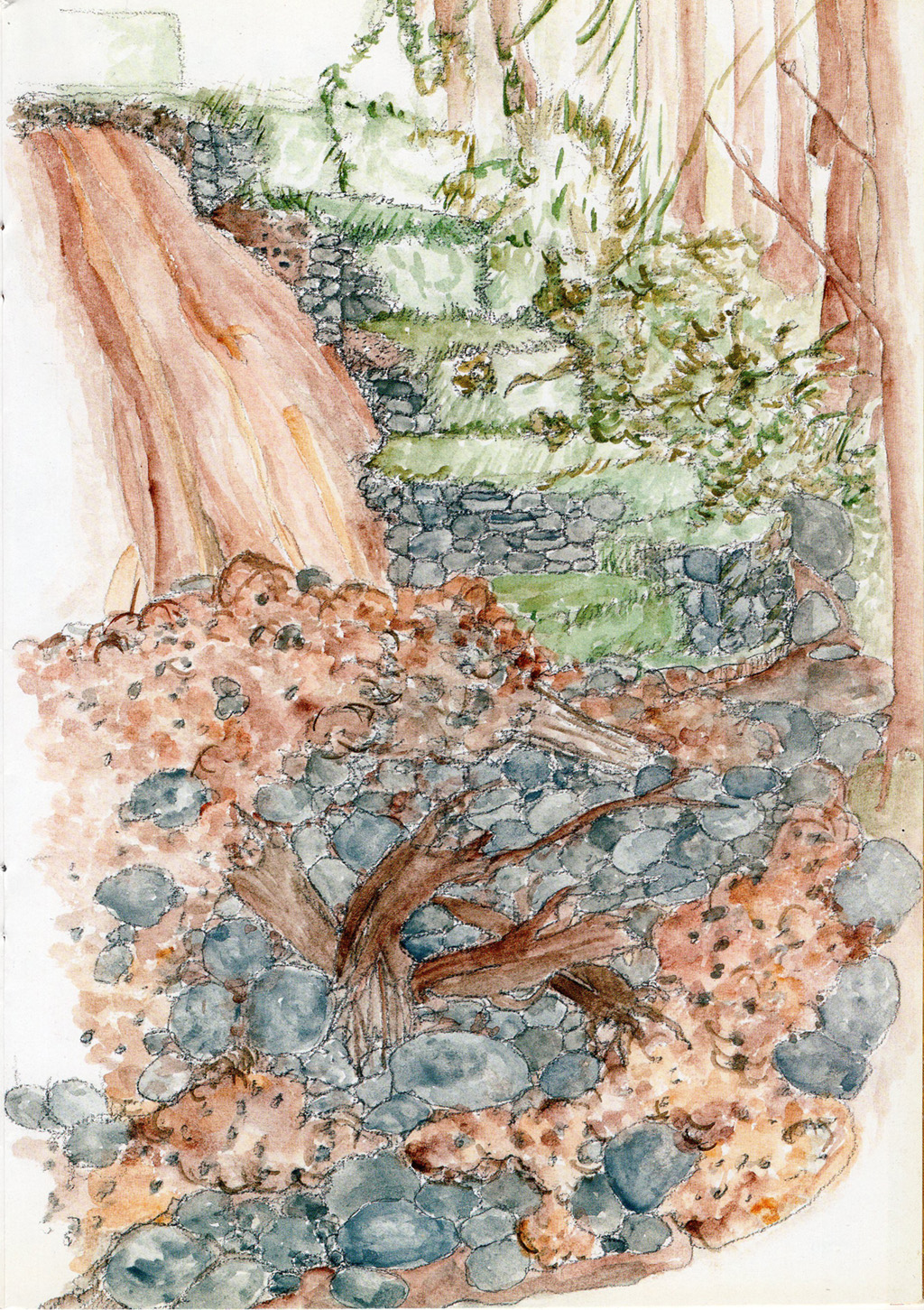The construction of the Ligurian bands
In the past, Ligurian agriculture was characterized by the conquest of marginal mountain and hilly lands, as a consequence of demographic growth, organization and colonization of the countryside.
The terraces supported by dry stone walls occupy very large areas, still clearly visible on the coast and more hidden in the hinterland, where they are often hidden by scrub and woods or removed by landslides that have erased their existence. The terracing is however almost continuous and was created by teams of peasant-labourers who have followed the same construction procedure for centuries.
The techniques had been perfected in ancient times until reaching a complex of popular engineering of great value which, the drawings presented here, define in the different steps. The research was also carried out thanks to observation, the reconstruction of collective memory and the consultation of written documents
The FIRST TABLE illustrates the search for a place where a new home can be built, the land suitable for the construction of bands. The domestic was so called because it was contrasted with the wild, land occupied by the forest, and this classification dates back at least to the Middle Ages, when settlers, or the owner of a forest land, could decide to create a new farm (the medieval manso).
The forest depicted is intended to be typical of the Ligurian hinterland of the East and may be composed of oaks, oaks, hornbeams and ash trees on considerable slopes
These slopes ended in cliffs subject to the erosive action of short torrential watercourses.
In the SECOND TABLE the “team” enters the scene: a group of daily worker-farmers, some of whom are specialized in dry stone construction, others with the function of laborers responsible for transporting the material and clearing the forest.
The initial phase of the work involves the construction of the maxee (from the Latin maceria), powerful embankments with the double function of containing the course of the stream and of forming a support base for the terraces that will be built subsequently. Water regulation and regularization of the external drainage of the terraced field will be fundamental for its conservation. In the meantime, the ground is freed from rocky outcrops (schëuggi) or blocks, crushing them and using the chipped stones.
In the THIRD TABLE the progressive construction of the terraces begins, the soil is excavated and, through large sieves, the earth is separated from the stone from the material obtained: the latter will be used as filling for the deeper part of the excavation and will serve as drainage for external water infiltrations, which could destroy the terrace if it were not able to support them. The sifted earth is instead distributed in an upper layer approximately 50 cm deep (observing the lateral section of the drawing you can see the different stratifications of the material which, compared to the initial situation presented in the first picture, is decidedly larger and less susceptible to washout). The construction of the embankments has been completed and the system is now protected from possible floods, furthermore the internal water is regulated by a slight slope of the terraces towards the side where the regulated watercourse flows.
FOURTH TABLE: final phase of construction. The system here is almost defined and on the slope it is almost completely terraced and supported by walls between two and three meters high, with shelves from three to five meters wide. The drawing identifies two different types of access to the crops (with protruding slabs and walkways) and the construction of a box for storing tools. In the texture of the dry stone walls, courses of stones arranged in a herringbone pattern are highlighted. These differentiations and particularities, which characterize the geometry of the terraces, are frequent and can also be typical of small areas.
Part of the team transports fertile allochthonous soil taken from the forest (with the corbs carried on the shoulders and placed on sacks), to increase the layer of arable land in the terraces located above, where it is no longer sufficient to use the material coming from the trench.
The FIFTH TABLE presents the finished household. Its construction took about two months of collective work carried out mainly during the winter season, but the maintenance of the system will become a centuries-old commitment that will involve entire generations of farmers. the terracing is now the supporting structure of the agricultural landscape and follows the subtle pattern of the isoipses, even on the most impervious slopes. The vineyard arranged in rows around the perimeter of the strips has a function that can also be a protection for the crops. In the drawing we also tried to highlight the chromatic differences with the forest that survived: the team of men completely transformed the environment.
The land illustrated and used as a sample has an area of approximately 300 m2, which the farmer was able to cultivate as a salo, therefore necessary for the sustenance of a single family if used with seasonal horticultural crops that produced fresh products, otherwise it could be used for specialized cultivation of rye, spelt and millet (in modern times often replaced by the cultivation of potatoes and corn), with other similar plots.
In the SIXTH TABLE the first consequences of abandonment are visible. Compared to the previous one, where the difference between the artificial terrain of the strips and the natural terrain of the forest is noted, the two environments now appear confused. The damage has in fact begun: the abandoned strips tend to develop spontaneous parasitic vegetation among which brambles (rubus spp, tree heather and aquiline fern) prevail, more frequent if the soil is exposed. In the meantime, the erosion of the maxea by the torrent and surface water has formed a microlandslide which detracts from the stability of the construction.
The moment the servant is no longer used, he is no longer able to survive on his own, precisely because he depends on the actions of the man who transformed him. Terraced spaces can thus suffer high degradation which leads to their disappearance.
The SEVENTH AND LAST TABLE shows what extreme consequences failure to protect the territory can lead to, because the land is unprotected. In fact, terraces constitute the most effective form of control of erosive processes.
In addition to the visible danger of the large landslide, there are others: the forest is damaged, especially by spontaneous plant formations such as clematis vitalba. If, prior to construction, the forest had its own climax (if it was, for example, a mixed forest), it could have reclaimed the uncultivated land, in particular with the holm oak forest; if instead it was a domestic chestnut grove, this hypothesis is less likely. In order to protect the entire territory, in the past man’s interaction with the environment was intense and varied to such an extent that it even made the transformation of the plant cover complex. This form of dependence has evolved with consequences that are visible above all in the different phases of abandonment, which make the areas vulnerable to other degradation processes: failure to take care of the undergrowth can, in fact, encourage the outbreak of fires.
Sources
Allegri R., “Il paesaggio ligure, un mondo di pietra, la costruzione dei terrazzamenti”, Regione Liguria-Assessorato alle Politiche dell’Agricoltura e dell’Entroterra, Genova, De Ferrari&Devega, 2003
Trekking and cycling routes that may interest you
Itineraries of different durations and suitable for every taste and level of preparation, to discover the most beautiful and evocative places and panoramas of the Ligurian Tigullio.
Local experiences that might interest you
Let yourself be guided and be surprised by the hidden treasures that the Ligurian Tigullio area is capable of offering you in every season.
Sport
Hiking routes, climbing, mountain biking and much more… Choose the sport in contact with nature that’s right for you!
Culture
Shows, Theatre, Music, Food and Wine, Reading… Experience the cultural and artistic proposals, immersed in the Ligurian landscape.
Nature
Geology, bird watching, nature engineering and other initiatives, to cultivate awareness and responsibility for environmental issues.
More heritage that may interest you
Catalog of the tangible and intangible heritage, a precious resource of the Tigullio for community building and local development.
Join us!
Contribute to preserve the history and traditions of the Ligurian Tigullio area, and keep them alive for future generations.


